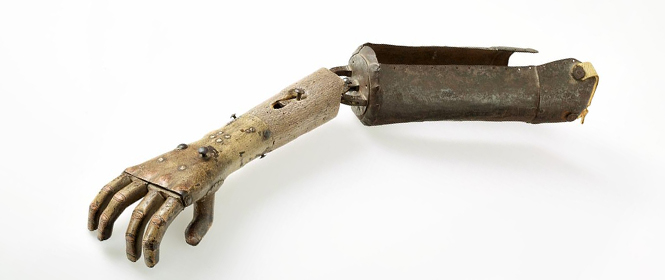
“Grüninger Hand”
In the latest instalment of our “What’s that for?” series, we would like to tell you about the “Grüninger hand” prosthesis, a new acquisition with rarity value that dates back to the early 16th century – and that recently went on display in our permanent collection.
Artificial limbs from the early modern period are extremely rare. In all of Europe, fewer than 25 mechanical hand and arm prostheses have survived from the 16th century – and a mere two from the 15th century. The “Grüninger hand” arm prosthesis, which was acquired on behalf of Deutsches Historisches Museum, dates back to about 1510 and is a technical masterpiece, boasting not only an elbow joint but also fingers that can be moved by pairs by means of a mechanism.
Prior to us acquiring the prosthesis at auction house Sotheby’s, it had been kept at Grüningen Castle in Upper Swabia (a property in the estate of the Barony of Hornstein) for centuries. It is not clear who commissioned the prosthesis, but it is a fairly safe assumption that it was a custom order for a high-ranking knight. It is equally probable that it originates from the same workshop that manufactured the “iron hand” for Götz von Berlichingen (1480–1562), a knight who lost his right hand during the siege of Landshut (War of the Succession of Landshut). This “iron hand” can now be admired at the museum at Jagsthausen Castle near Heilbronn.
Technical masterpiece
The artificial arm is a prime example of the technical craftsmanship and the history of mentalities of the early modern period. It illustrates the advanced state of precision mechanics in the Renaissance, as well as the aesthetic standards governing the design of such a sensitive replacement limb. The arm prosthesis is made of wooden and metal parts. The elbow joint is able to adopt six different positions, whilst the fingers can be moved using a push-button mechanism.
For Deutsches Historisches Museum, the arm prosthesis constitutes an impressive and prestigious addition to its existing collection.